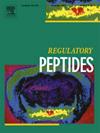Different responses of galanin and calcitonin gene-related peptide to capsaicin stimulation on dorsal root ganglion neurons in vitro
Abstract
Both galanin (Gal) and calcitonin gene-related peptide (CGRP) are sensory neuropeptides which expressed in dorsal root ganglion (DRG) neurons and are involved in nociceptive processing. Capsaicin (CAP) influences nociceptive processing via influencing the expression of sensory neuropeptides in primary sensory neurons. However, little is known about the alterations of Gal and CGRP expression at the same condition stimulated by CAP. In the present study, primary cultured DRG neurons were used to determine the different responses of Gal and CGRP to CAP stimulation. DRG neurons were cultured for 48 hours and then exposed to CAP (2 μmol/L), capsazepine (CPZ) (2 μmol/L) plus CAP (2 μmol/L), or extracellular signal-regulated kinase 1/2 (ERK1/2) inhibitor PD98059 (10 μmol/L) plus CAP (2 μmol/L) for an additional 24 hours. The DRG neurons were continuously exposed to culture media as a control. After that, the levels of Gal mRNA and CGRP mRNA of DRG neurons were determined using real time-PCR analysis. Gal and CGRP expression in situ was detected by an immunofluorescent labeling technique. The levels of phosphorylated-ERK1/2 (pERK1/2) protein were detected using a Western blot assay. The results showed that CAP evoked increases of Gal and its mRNA and decreases of CGRP and its mRNA in DRG neurons. Administration of either CPZ or PD98059 blocked the effects of CAP. These data indicate that Gal and CGRP shared different responses to CAP stimulation. Gal and CGRP may have different effects in nociceptive processing during neurogenic inflammation.

 求助内容:
求助内容: 应助结果提醒方式:
应助结果提醒方式:


